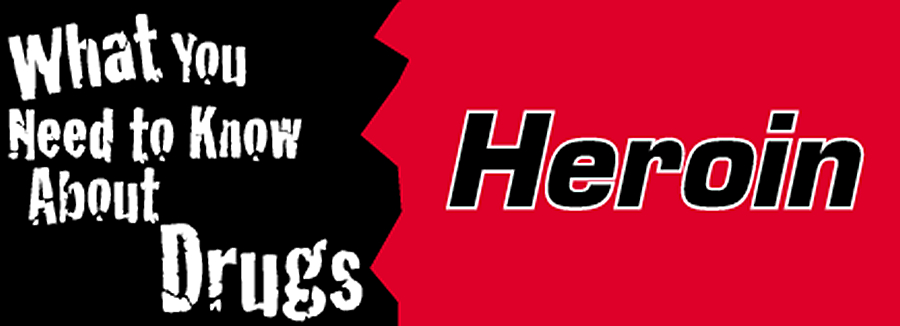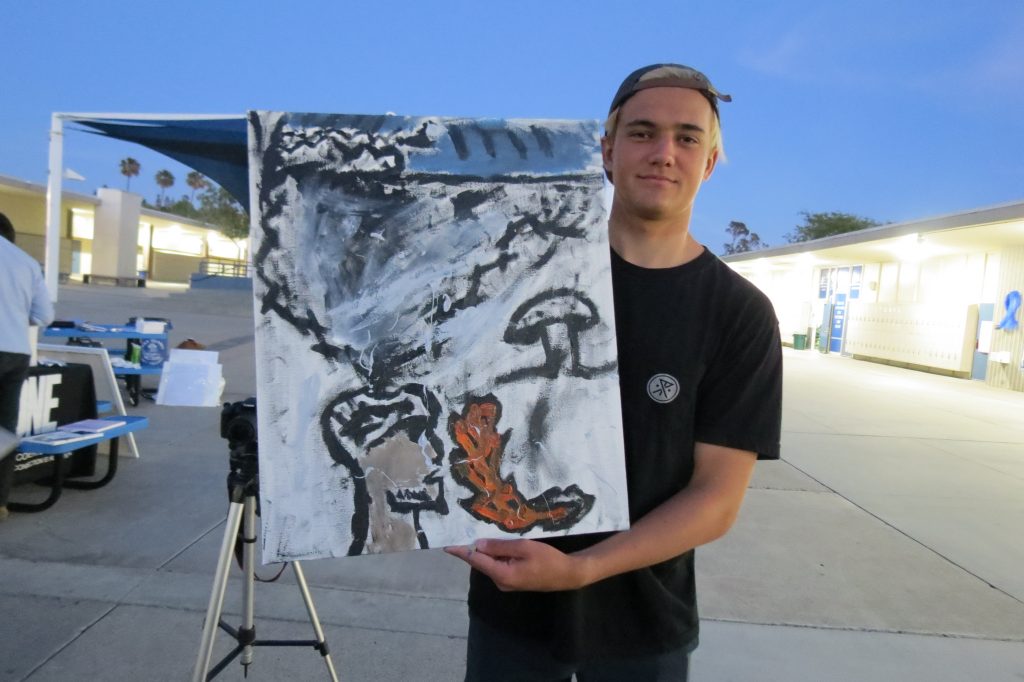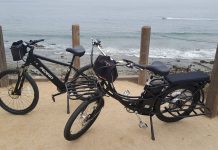By Elizabeth Greenberg | NB Indy
Lines of computers sat beneath walls of darkly colored paintings. A sign threatening a lunch detention for eating or drinking in the computer lab hung on the wall. How bad could this problem be? Was it like this at every high school in America? California? What about the high school just across the bay?
Questions like these were discussed as parents and a few students crowded into the computer lab at Newport Harbor High School for a PTA meeting on April 20 to address the current heroin epidemic. 
Deemed a “Night of Knowledge,” several speakers, including Newport Beach Police Department Student Resource Officer Vladimir Anderson, offered advice and insight into the drug problem facing Newport Harbor High School.
“We live in a very nice community… But quite frankly, [students] face the same obstacles, the same challenges, as any kid in any neighborhood. Drugs are in our community, just like they are in every community, in every county, across the United States,” Anderson said, the main problem is denial.
The beauty of the area and the success of the parents do not deter drugs away from a community.
“There’s only so much that we can do at our school, it’s a much larger problem in our society, way beyond the walls of the school,” Newport Harbor Principal Sean Boulton said.
All the speakers warned about the progression of drugs, a progression that former NHHS student Justin Eakin experienced first-hand. After drinking alcohol and smoking marijuana, it was not long before prescription drugs and heroin joined Eakin’s hobbies. Successful in athletics, good in school, and a thriving social life, Eakin’s outward success hid a second life of drug abuse and intense partying.
Eakin reasons his anxiety and need to fit in lead to his comfort in drugs and alcohol. Hands off parenting and availability of money and drugs added to a quick progression. His first experience with hard drugs was using his mother’s prescription drugs.
“As a kid, or being in high school, once I started to hit these higher and higher peaks there was no reason for me to go back down,” Eakin said.
Eakin’s usage escalated during college, and when he came back home to Newport Beach, heroin was even more accessible than before. After hitting his low point, he went through different rehab houses and then founded his own. His cautionary tale relates too much to the epidemic of heroin usage at Newport Harbor.
Matt Kaplan, an emergency physician at Mission Hospital in Mission Viejo, said during the meeting that “since 2008, we’ve seen a fourfold increase in the number of deaths from prescription pills and from heroin.”
He only works about three nights a week, but there is no off time in the world of drugs.
“I see on the average probably one overdose a night, with about one to two deaths a month. If you think we are sheltered in Orange County, you couldn’t be more wrong,” Kaplan said.
In Newport Beach, the most startling aspect of drug abuse overall may be marijuana use.
“Marijuana use is commonplace,” Anderson said, designating it as a gateway drug. But the science is not definite on the subject; marijuana is definitely linked to other drug use, but correlation does not mean causation. On the biological level, various studies leave too much to the unknown and cannot definitely prove that marijuana use leads to the use of other drugs like heroin and cocaine. Cannabis can increase the likeliness of addiction in the future, but so can alcohol, nicotine, and other addictive substances.
However, the illegality of the drug and the nature of drug dealing could be a cause. Because marijuana use is more accepted in recent years and states continually legalize it, more and more people try marijuana illegally, from drug dealers. Dealers, in turn, push other drugs onto users. It’s just good business.
At the meeting, parents learned that PCH was a highway for drugs, and the surrounding community of Newport Harbor was a hot spot for heroin usage. Once a community gets its hands on these drugs, it is not long before they become commonplace in schools.
“It’s not a school issue, it’s a community issue,” Anderson explained to parents.
The school can only do so much, like bringing a drug dog to school and searching classrooms. The Newport-Mesa Unified School District board of education voted to discontinue random drug testing, which could have pointed out specific users, but would not have addressed the overriding problem of drug abuse.
A new approach is being piloted just across the bay, at Corona del Mar High School.
Decorated in college logos of prestigious universities across the country, the Student Resource Center is the place to go at CdMHS for college information. And at CdM, college is the goal, it is the given, and it often puts a lot of stress on students.
But on Thursday evenings, the lights come back on in the SRC for a different reason, and a One Recovery meeting begins with a breathing exercise.
One Recovery is an organization dedicated to helping students recover from a number of difficulties, from drug abuse to cutting class. Students can attend five one-hour meetings instead of getting suspended from school. The meetings usually consist of speakers, conversations, and activities. On April 21, the students painted as a way to release stress, anxiety, or simply their imagination in a constructive way.
One student, who wished to only be identified as Skylar, was there for his fourth meeting, after being caught getting high on campus. He chose five One Recovery meetings over three days of suspension.

— Photo by Elizabeth Greenberg ©
“Everyone I know smokes weed,” he said. “A lot of them do it just for fun, but some do it for bad reasons, like traumatic experiences, or like stress, or they’re having issues with their family.”
The supplier was a former CdM student who had a medical marijuana card. After his first meeting, Skylar used once, but has not used again since. He plans on attending the meetings after his required five.
“They’re fun and there are great people,” he explained.
A female student, who wished to remain anonymous, faced suspension for having a drug-laced edible at school. A hard home life and intense pressure to get good grades, she started drinking, smoking marijuana, and using Adderall.
“I wasn’t getting any sleep because I was on Adderall, and because I was getting good grade my parents didn’t really notice,” she said.
Though she went through the D.A.R.E. program, it did not help her stay away from drugs. Stress caused her to start, but hearing stories from past users in One Recovery helped her quit.
“Lectures make me want to do more,” she said, “the speakers were really effective. They scared me straight.”
She stopped using after her first meeting and attended all of her required meetings, but returns every week because she loved the founder, Lynne Pedersen.
Pedersen sold her house to found the organization because she noticed a “void of places where kids could get support for free.”
“I wanted to help kids with many different issues because there are many different forms of self-medication besides drug abuse,” Pedersen said. “So we focus on helping kids get through life.”
Due to its success, One Recovery will be operating district wide next school year, and may help quell the heroin usage at Newport Harbor High.
Perhaps giving students a positive outlet is the answer they need.




